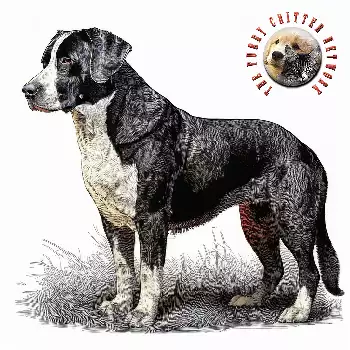The integration of a Rafeiro do Alentejo into family life creates a unique dynamic characterized by their natural assumption of protective responsibility for all family members while maintaining respectful relationships based on mutual trust and understanding. These dogs do not simply join families; they adopt them, extending their guardian instincts to encompass every member of the household and establishing themselves as silent sentinels who monitor family welfare constantly. This protective assumption occurs gradually as the dog assesses family routines, identifies potential vulnerabilities, and develops personalized approaches to ensuring each member's safety and security.
The breed's relationship with children demonstrates their remarkable ability to modify their behavior according to the age and needs of different family members. Rafeiro do Alentejo dogs often display extraordinary patience with young children, allowing behaviors they would never tolerate from adults or strangers while maintaining constant vigilance for the child's safety. They naturally position themselves between children and potential dangers, whether those dangers are physical obstacles, unfamiliar people, or even family conflicts that might distress young family members. This protective instinct extends to monitoring children's activities and occasionally intervening when they perceive risky behavior.
Adult family member relationships typically develop along hierarchical lines that reflect the dog's pack animal heritage and working dog background. Rafeiro do Alentejo dogs usually identify one family member as their primary human partner, often the person who provides care, training, and most consistent interaction. However, this special relationship does not diminish their protection of or affection for other family members; rather, it establishes a clear communication channel and leadership structure that helps the dog navigate complex family dynamics and decision-making situations.
The breed's influence on family activities often extends beyond typical pet ownership, as their size, intelligence, and protective nature naturally guide families toward more outdoor-oriented and security-conscious lifestyles. Many families find themselves becoming more active hikers, campers, or property developers as they discover their dog's enjoyment of these activities and their natural ability to enhance family security during outdoor adventures. The dog's presence often increases family confidence in exploring rural areas, camping in remote locations, or maintaining larger properties that might otherwise feel overwhelming or unsafe.
Household routine establishment becomes particularly important with Rafeiro do Alentejo dogs, as their guardian instincts are enhanced by predictable patterns that allow them to identify normal activities versus unusual occurrences. These dogs thrive in families that maintain consistent schedules, regular meal times, and established bedtime routines that help them optimize their protective monitoring. Disruptions to established routines often increase their alertness temporarily as they assess whether changes indicate potential problems or simply normal family adaptations.
Multi-pet households require careful management and gradual introduction processes, as Rafeiro do Alentejo dogs extend their protective instincts to include family pets while maintaining natural prey drives that can create conflicts with smaller animals. Success in multi-pet families typically depends on early socialization, proper introductions, and clear establishment of the dog's protective role regarding all family animals. Many owners find that their Rafeiro do Alentejo becomes an effective mediator and protector for other family pets, breaking up conflicts and ensuring that all animals receive appropriate care and attention.
Visitor management becomes a significant family consideration, as the breed's natural suspicion of strangers requires clear protocols for introducing new people to the household. Successful families develop consistent procedures for guest arrivals that allow the dog to assess visitors properly while maintaining family social activities. This often involves structured introduction processes, designated areas for initial meetings, and clear communication about the dog's protective role to ensure that guests understand and respect the family's unique dynamic.
The breed's impact on family decision-making extends to considerations about housing, travel, and lifestyle choices that accommodate their size, exercise needs, and protective instincts. Many families find themselves choosing homes with larger yards, planning vacations that include their dog, or modifying their social activities to include their four-legged family member. These adaptations, while requiring some lifestyle adjustments, often strengthen family bonds and create shared experiences that might not have occurred otherwise.
Training responsibilities within the family typically require coordination among all members to ensure consistent messages and expectations for the dog. Rafeiro do Alentejo dogs can become confused or stressed when different family members provide conflicting instructions or expectations, making family-wide training approaches essential for success. The most effective families establish clear rules, consistent commands, and shared responsibilities for the dog's care, training, and management that create a stable environment for optimal development and behavior.
Long-term family evolution with a Rafeiro do Alentejo often results in stronger family security awareness, increased outdoor activity levels, and deeper appreciation for the natural world that reflects the dog's rural heritage and working background. Many families report that their dog's presence has enhanced their quality of life, provided unique learning experiences for children, and created lasting memories associated with their remarkable four-legged family member who quietly but constantly ensures their safety and well-being.

